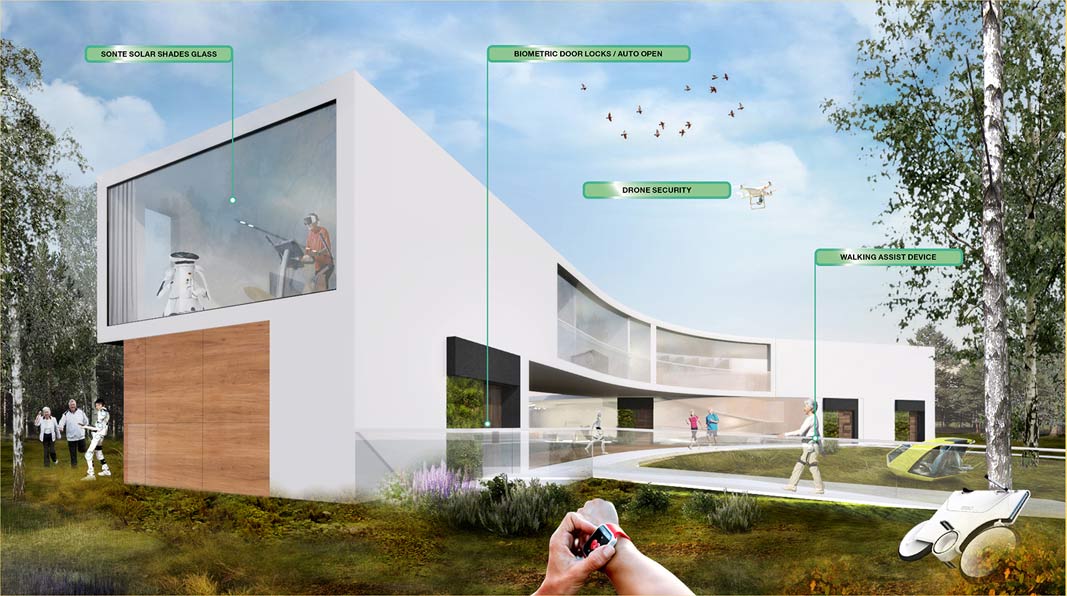Almost 32 million people will be aged 60 or over in the UK by 2039, and the need to provide new homes suitable for older people is therefore going to become increasingly important. But what sort of living environment do future retirees want when they embark on the next chapter of their lives?
To commemorate the 40th anniversary of the opening of our first retirement development, McCarthy & Stone commissioned a far-reaching report into how smart technologies in the home could transform independent living for older generations.
Working with the social campaigning organisation, the Agile Ageing Alliance, we have published Neighbourhoods of the Future – the first ever report by the housing sector ton the role new technologies could play in helping to manage the challenges and opportunities presented by a rapidly ageing population.
The report notes that within the next 20 years, older people could be living in an intelligent ‘Cognitive Home’ that is almost human, and which is able to read, assess and manage individual needs and desires.
According to the report, the retirees of the future anticipate smart, non-intrusive, secure connections with friends, family, GPs and/or carers. In the smarter houses and apartments of the future, we’ll expect an update on what’s going on in and around our home, and this information will be shared with those who help us – should we need it to be.
When problems are imminent, whether in our home or outside, we’ll expect to be alerted, in a way which goes far beyond the warnings about open doors or undone seat belts offered to us by our (current) cars. Technology will update us on news and events in the neighbourhood and when the bus will arrive, all managed via our mobile phone. Even our fridges will talk to us and make sure we don’t run out of ingredients by automatically keeping stocks topped up.
Power suits, robotic assistants, self-stocking fridges, intuitive health care and virtual GPs may all be provided in the comfort of our home, and there are already a range of exciting products already out there with more coming to market.
McCarthy & Stone’s developments already feature camera-door entry systems linked to TVs, 24 hour call systems, electric windows, electric buggy scooter stores, and Wi-Fi in shared areas. We will also shortly be installing ultra-fast broadband as standard on every development and have trialled Bluetooth mirrors (which play music and can connect to your phone). We are also changing the design of our existing tele-healthcare services so they look easier on the eye and more contemporary.
In addition, we have trialled a tablet-based healthcare monitoring and communications system, which includes video / audio calling, messaging, photo / video sharing, medication reminders, automated alerts, well-being trends, daily check in, call me requests, and exercise videos. We will also be looking at discrete wearable healthcare monitoring devices (such as fobs, bracelets and watches) which can monitor, alert, analyse and prevent future issues. Although we don’t think tech will ever replace the need for the personal ‘human’ touch and companionship, there is certainly a role for augmenting personal support through well-designed products.
We commissioned this report to influence our thinking, and the thinking of other housing providers. Our aim has been to summarise in one place, perhaps for the first time, what technology is on the horizon and consider how it could empower older adults. Looking to the future, we want technology to be inclusive – for the benefit of everyone – and ultimately to facilitate the creation of new homes that will support happier, healthier and, hopefully, longer lives.
In-depth report commissioned by McCarthy & Stone predicts intelligent “Cognitive Homes” of the future will be able to assess and manage our needs and our desires in later life: https://www.mccarthyandstone.co.uk/life-and-living/explore/technology/home-smart-home/

